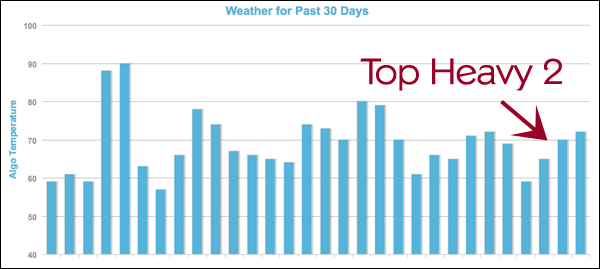It’s “Top Heavy 2” As Google Rolls Out Update To Its Page Layout Algorithm
Another week, another update to part of Google’s search algorithm. This time, Google announced a refresh of its Page Layout filter that it first announced back in January, or what’s often called the “Top Heavy” update. Updates, Updates It’s the fourth Google update in the past two weeks. The rundown so far: Panda Update 20: Sept. 27, […]

Updates, Updates
It’s the fourth Google update in the past two weeks. The rundown so far:
- Panda Update 20: Sept. 27, 2012
- EMD Update 1: Sept. 28, 2012
- Penguin Update 3: Oct. 5, 2012
- Top Heavy 2: Oct. 9, 2012
The Latest On Top Heavy
The head of Google’s web spam team Matt Cutts announced the update today on Twitter and called it “minor,” saying it noticeably affects 0.7 percent of English-language queries:
Minor weather report: Update of goo.gl/OpIDL launching today. ~0.7% of English queries noticeably affected.
The link in Cutts’ tweet points to Google’s original post about the Page Layout algorithm from January, which explains the algo thusly:
We’ve heard complaints from users that if they click on a result and it’s difficult to find the actual content, they aren’t happy with the experience. Rather than scrolling down the page past a slew of ads, users want to see content right away. So sites that don’t have much content “above-the-fold” can be affected by this change.
If you click on a website and the part of the website you see first either doesn’t have a lot of visible content above-the-fold or dedicates a large fraction of the site’s initial screen real estate to ads, that’s not a very good user experience. Such sites may not rank as highly going forward.
Our own story from the initial release also has more information: The Top Heavy Update: Pages With Too Many Ads “Above The Fold” Now Penalized By Google’s “Page Layout” Algorithm.
On the latest update, Google tells us that it is now live globally and no, it doesn’t have more specifics to share about how the filter may have been changed since it was first launched in January.
Getting Caught & Freed By Top Heavy
While officially the filter is called the “Page Algorithm” update, we and others have taken to calling it by the more descriptive “Top Heavy” name, since it focuses on penalizing pages that are top heavy with ads.
This is the second confirmed refresh of this particular factor in Google’s ranking system:
- Top Heavy 1: Jan. 19, 2012 (impacted less than 1% of English searches)
- Top Heavy 2: Oct. 9, 2012 (impacted 0.7% of English searches)
There may have been other refreshes of Top Heavy that aren’t confirmed, of course. We have asked, but Google won’t confirm if there were others. We number updates here for common reference by others and only for those that are confirmed.
For Top Heavy 1, the impact was said initially to be less than 1% of global queries. Google also told us today that it was about the same for English-language searches. That compares to an impact on 0.7% of English searches from Top Heavy 2.
The update means those who were hit by Top Heavy before potentially are now freed, if they made changes Google recommends. Those hit by it with the latest update will have to make changes and then wait until the next refresh of Top Heavy. The articles below explain more about how this type of filtering cycle works:
- The EMD Update: Like Panda & Penguin, Expect Further Refreshes To Come
- The Return Of The Google Dance
Google has promised more alerts for webmasters about its algorithm changes, and that’s certainly playing out over these past two weeks.
Postscript (October 10): Visualizing The Top Heavy Impact
There are a number of services that aim to show changes in Google’s search results by tracking a set of keywords and measuring the volatility in which pages rank on a day-to-day basis. We have images from three services that help visualize how a Google algorithm update like Top Heavy can change search results. The images below are from, in order, SerpMetrics.com, SERPs.com and MozCast.
Contributing authors are invited to create content for Search Engine Land and are chosen for their expertise and contribution to the search community. Our contributors work under the oversight of the editorial staff and contributions are checked for quality and relevance to our readers. The opinions they express are their own.
Related stories
New on Search Engine Land


